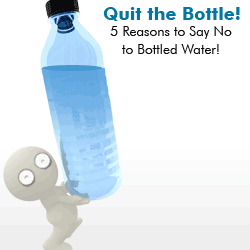
GAC is often made from bituminous coal, walnut shells, coconut shells, lignite or peat. GAC media from bituminous coal is activated by high temperature heating with steam. This produces a high density, durable, and absorbent media with exceptionally high internal porous particle structure. This material is excellent for absorption of a wide range of low and high molecular weight impurities such as detergents, insecticides, phenols and other contaminants. GAC units commonly follow sand filtration where water quality needs upgrading.
Over forty-two million Americans receive their drinking water from private wells that are not regulated under the Safe Drinking Water Act. In many instances, wells are shallow and contaminated with pesticides, metals and organics. Many forms of filtration for wells are insufficient, the most likely reason because the turbidity in the well water is being caused by suspended colloid size particles that are smaller than the pores in the filter being used. Which explain why the use of activated carbons and reverse osmosis, especially those used from agricultural by-products is beginning to gain steam
Activated carbons can be prepared from a large variety of carbon-containing feedstocks by the activation of pyrolyzed char. The most common feedstocks for the commercial production of activated carbons are anthracite and bituminous coal, lignite, peat, and the lignocellulosic materials wood and coconut shells (Pollard et al., 1992). Plentiful agricultural by-products such as sugarcane bagasse, rice straw, soybean hulls, rice hulls, and nutshells are lignocellusic wastes that may offer an inexpensive and renewable additional source of activated carbons.
Such carbons may have the potential to replace existing carbons, especially coal-based carbons used in many industrial applications including the removal of color and odor compounds in aqueous systems (e.g., raw sugar decolorization) and removal of colorants from raw sugar. Physical, chemical, and adsorption properties of activated carbon determine its efficiency in removing targeted compounds, e.g. sugar colorants. Physical and chemical characteristics that are important for sugar decolorization include surface area, particle size, bulk density, hardness, pH, and ash.
These properties vary depending on the precursor and pyrolysis/activation conditions used to produce activated carbons (Gergova et al., 1994; Mackay and Roberts, 1982a; Mattson and Mark, 1971; Rodriguez-Reinoso and Solano, 1989). Activated carbons can be powdered or granular. Granular activated carbons (GACs) are generally considered more versatile than the powdered carbons due to their regenerability. GACs command a large percentage of the carbon market (Activated Carbon Markets, 1994. Report No. 612. The Freedonia Group, Cleveland, OH, 161 pp.Activated Carbon Markets, 1994), especially for raw sugar decolorization, because of their versatility.
The type of agricultural by-product is important in determining its suitability for GAC production. Agricultural by-products used as precursors in carbon production can be classified into two groups. Group 1 materials consist of soft compressible waste products of low density, such as sugarcane bagasse, rice straw, soybean hulls, peanut shells, and rice hulls. To make a good precursor for production of GACs, group 1 materials must be mixed with suitable binder and compressed into briquettes or pellets to increase the density of the final product (Johns et al., 1998).
In contrast, group 2 materials, such as nutshells from pecan and walnut, are hard, dense and not easily compressed. Group 2 by-products are also suitable as GAC precursors without binder or briquette formation. Rice hulls, rice straw, and sugarcane bagasse, by-products from economically important Louisiana crops, have been used as a source of powdered activated carbons by several authors (Pollard et al., 1992; Youssef and Mostafa, 1992; Teker et al., 1997; Lavarack, 1997; Bernardo et al., 1997; Mackay and Roberts, 1982a). However, limited knowledge is available on the production of granular activated carbons from these agricultural by-products.

Production of GACs from these soft materials uses binders to ensure intimate contact of the lignocellulosic particles during pyrolysis. Coal tar is the binder commonly used in the production of coal-based granular activated carbons. However, sugarcane molasses, a by-product of sugar refining, has been used as a binder in various agricultural by-products to produce GACs (Arida et al., 1992; Girgis et al., 1994; Ahmedna et al., 1997b; Johns et al., 1998; Pendyal et al., 1999a and Pendyal et al., 1999b). Similarly, other liquid by-products, such as sugar beet molasses and corn syrup, can also be used as binders for the production of GACs from group 1 by-products (Pendyal et al., 1999a and Pendyal et al., 1999b). One particular group 2 material, coconut shells, has been used as a commercial source of GACs.
Several studies (Toles et al., 1997; Toles et al., 1998) have demonstrated that other nutshells make excellent GACs for metal adsorption and also show promise in removal of sugar colorants (Ahmedna et al., 1997b). Many laboratories have recently determined the physical, chemical and adsorptive properties of GACs made from sugarcane bagasse, rice straw, and rice hulls along with the binders coal tar, corn syrup, sugarcane molasses, and sugar beet molasses (Pendyal et al., 1999a). It was found that the presence of specific binders influenced the physical and chemical properties of the resultant carbons, while adsorption of sugar colorants was dictated by the by-product, and not the binder. The by-product/binder combinations with the best physical/chemical or adsorptive properties were employed in this study, albeit under different activation conditions.
The choice of pecan shells as the group 2 representative was based on promising results for pecan shell-based carbons as sugar decolorizers in an earlier study from our laboratory (Ahmedna et al., 1997b). The objectives of this study were to
- produce GACs using representative feedstocks from groups 1 and group 2 agricultural by-products that had shown promising results in previous studies from our laboratory,
- determine the physical/chemical and adsorption properties of by-product-based carbons along with those of two commercial carbons, and
- select the best by-product-based carbons from each group based on their similarities to the reference carbons using principal component and cluster analyses.



